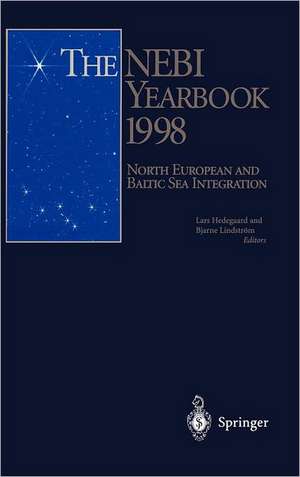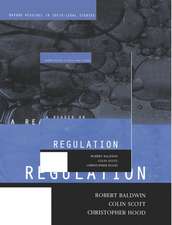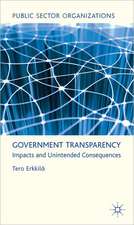The Nebi Yearbook 1998: North European and Baltic Sea Integration
Editat de Lars Hedegaard P. Joenniemi Editat de Bjarne Lindström A. Östhol, K. Peschel, C.-E. Stalvanten Limba Engleză Hardback – 19 mar 1998
| Toate formatele și edițiile | Preț | Express |
|---|---|---|
| Paperback (1) | 962.18 lei 6-8 săpt. | |
| Springer Berlin, Heidelberg – 16 oct 2012 | 962.18 lei 6-8 săpt. | |
| Hardback (1) | 968.65 lei 6-8 săpt. | |
| Springer Berlin, Heidelberg – 19 mar 1998 | 968.65 lei 6-8 săpt. |
Preț: 968.65 lei
Preț vechi: 1181.28 lei
-18% Nou
Puncte Express: 1453
Preț estimativ în valută:
185.40€ • 192.82$ • 155.36£
185.40€ • 192.82$ • 155.36£
Carte tipărită la comandă
Livrare economică 14-28 martie
Preluare comenzi: 021 569.72.76
Specificații
ISBN-13: 9783540642107
ISBN-10: 3540642102
Pagini: 672
Ilustrații: XII, 655 p.
Dimensiuni: 155 x 235 x 41 mm
Greutate: 1.11 kg
Ediția:1998
Editura: Springer Berlin, Heidelberg
Colecția Springer
Locul publicării:Berlin, Heidelberg, Germany
ISBN-10: 3540642102
Pagini: 672
Ilustrații: XII, 655 p.
Dimensiuni: 155 x 235 x 41 mm
Greutate: 1.11 kg
Ediția:1998
Editura: Springer Berlin, Heidelberg
Colecția Springer
Locul publicării:Berlin, Heidelberg, Germany
Public țintă
ResearchDescriere
Thorvald Stoltenberg Ambassador Chairman of the Editorial Advisory Board Most of us have been overwhelmed by the speed and extent of the changes that have been taking place in Europe since the late 1980s. Over the span of a few years, we have witnessed the collapse of the Soviet Union and the unification of Ger many. This process has had far-reaching implications for Northern Europe: the Baltic states have attained independence, and with the establishment of the Baltic Sea regional co-operation and the Barents co-operation, a new type of East-West relations has come into being. The process of change continues. Its latest manifestation is the agreement between Russia and NATO, and NATO and EU enlargement is expected to take place over the next few years. With such far-reaching transformations, we need to reflect on what is hap pening. We need a more coherent picture of the new situation in Northern Europe and of where we are heading. This Yearbook is an attempt to fulfil this need. I would like to thank the editors for taking this initiative, which has been long awaited by those of us who have been actively interested in the improved relations between the former East and the old West that have been made possible by the end of the Cold War - and particularly in the new opportunities for cross-border co-operation and integra tion in the North European and Baltic space.
Cuprins
L. Hedegaard, B. Lindström: The North European and Baltic Opportunity.- K. Peschel: Economic Integration: K. Schrader, C.-F. Laaser: Core Elements of Successful Reform in Baltic Rim Countries.- K. Prunskiene: The Importance of Social and Political Stability for Integration into Europe: Lithuania`s Case.- L. Lundquist, L. Persson: Current Trends in Economic Integration.- S. Callsen: Trade Potentials in Northern Europe and Consequences for Traffic Flows.- U. Kivikari: Foreign Direct Investment: Problems in Deepening the Integration of the Baltic Sea Region.- V. Didyk, U. Wiberg: Sustainable Investment Policies in the Murmansk Region.- J. Karppi: Labour Force Mobility in the Baltic Sea Area and the Transition Economies: With Special Reference to Economic Integration.- E. Rabinowicz: The CAP: An Obstacle to EU Enlargement?.- E. Terk, J. Teder: Estonian Entrepreneurship: Towards Western Markets and Operating Patterns.- C.-E. Stalvant: Spatial Planning and the Environment: R. Westermann: A Critical Analysis.- G.Sjöstedt: Transboundary Environmental Problems: Risk Analysis and Practical Lessons.- G. Raagmaa, R. Vürst, K. Pungas, H. Haljaste: European Transport Corridors along the Eastern Baltic Shores: International and National Internets.- R. Hjorth: Development and Implementation of Baltic Sea Pollution Commitments: The Case of Sweden.- J. Salay: Poland`s Economic Recovery and Its Implication for Energy Use and Air Pollution.- C. Ellger, K. Richter: The New Berlin: Towards the Sustainable Capital?.- M. Pacuk, T. Palmowski: The Development of Kaliningrad in the Light of Baltic Co-operation.- A. Östhol: Transborder Regional Co-operation: V. Frhr. von Malchus: Cross-Border Co-operation after World War II.- H. Baldersheim, K. Stahlberg: A Norden of the Regions?.- I. Jorgensen, J. Nielsen: Spatial Development and Planning between 'High' and 'Low' Politics: Interreg II C in the Baltic Sea Region.- R. Cappellin: Transborder Co-operation along the EU`s External Borders and the Turnabout of Regional Development Policies: A Mediterranean Perspecitve.- H. Aalbu: Cross-Border Co-operation in the Barents Region.- B. Svensson: Business and Politics in the Barents Region.- P. Joenniemi: Political Integration, Territorial Governance and Security: K. Möttölä: Security around the Baltic Rim: Concepts, Actors and Processes.- B. Herulin: Military Command Structures in the Baltic Sea Area.- J. Sharp: CFE and the Baltic Rim.- T. Forsberg: Settled and Remaining Border Issues around the Baltic Sea.- C. Archer, O. Jaeger: The Security Policy Doctrines in the Nordic and Baltic Countries: Stability and Change.- A. Sergounin: Russia`s Security Policies in the Baltic Sea Area.- W. Kostecki: Poland`s Security Policies in the Baltic Sea Area.- A. Krohn: Germany`s Security Policies in the Baltic Sea Area.- J. Löfgren, H. Mannonen: 'Internal' Security in the Baltic States.- H.-M. Birckenbach: The Tackling of Minority Issues in the Baltic Sea Regionin the Context of OSCE and CBSS.- J. Köll: North European and Baltic Statistics.
Caracteristici
Most up-to-date, most comprehensive and most reliable source of reference available for the entire North European and Baltic Sea area.
With a unique, specially generated statistical section covering the entire region.
With a unique, specially generated statistical section covering the entire region.
















